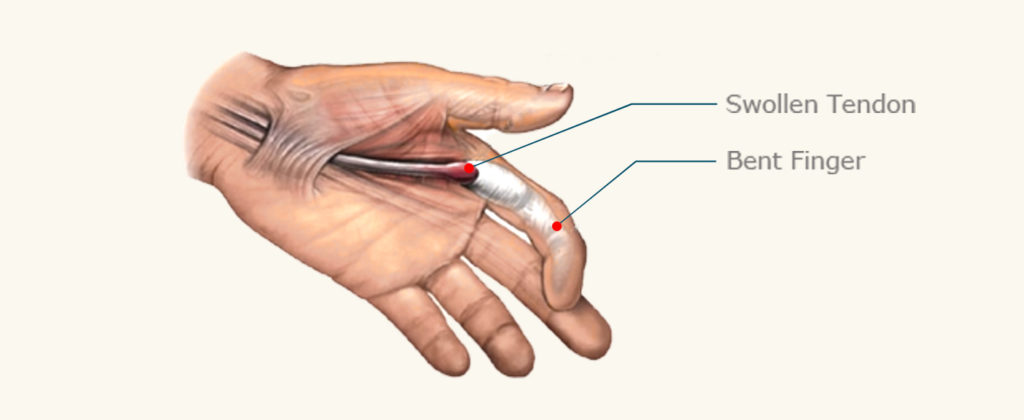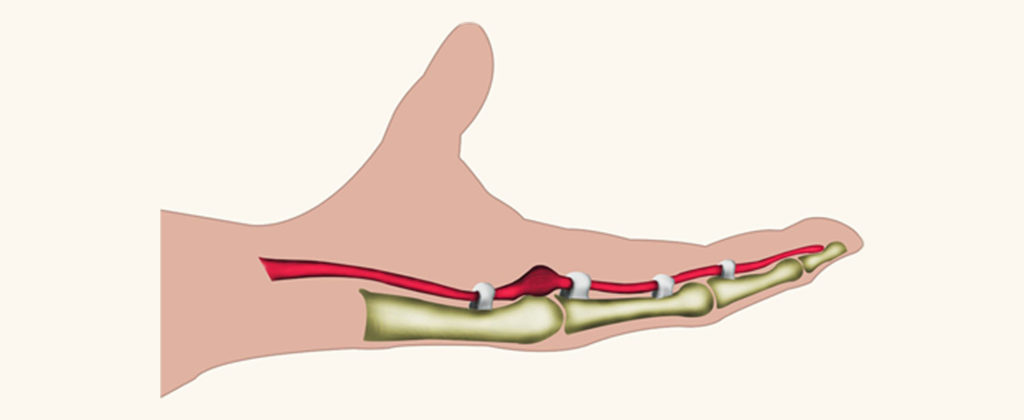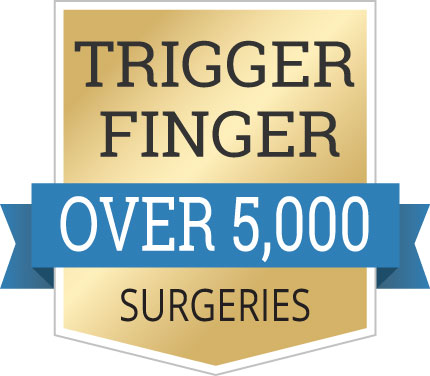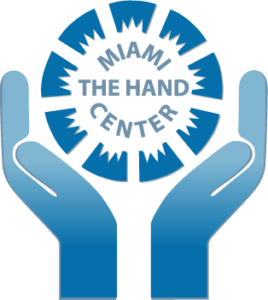
Trigger Finger
Trigger finger is a painful condition that causes the fingers or the thumb (then called trigger thumb) catch or lock when bent. In the early stages there might be just some discomfort at the base of the digit and the locking may be only in the morning but the digits can then pop out and extend without much pain. As the condition worsens, the catching sensation, the locking, the popping, and the pain become more constant and it becomes more and more painful to straighten the digit. Eventually, the finger becomes more permanently locked or stiff, unable to fully extend or to flex without excruciating pain. Trigger finger is also called stenosing tenosynovitis because it is a stenosis (from ancient Greek meaning abnormal narrowing) that causes inflammation of the tendon (teno-) and its surrounding synovial tissue (-synovitis).
Symptoms Associated with Trigger Finger
Symptoms linked to trigger finger are as follows:
- Random lockup in the finger
- Pain straightening or bending
- Difficulty extending the finger
- Swelling & Stiffness
What Causes Trigger Finger?
Our digits bend because they are connected to the muscles in our forearm by tendons. When the muscles contract, they pull on the tendon and this pull draws the finger into flexion. Our tendons function like bicycle cables. Just like bicycle cables, they have a central cable and a surrounding sheath that guides the cable and provides the counterforce for flexion. The sheath of our tendons consists of a series of pulleys that keep the tendon aligned with the bones of the finger. With wear and tear, overuse, and in predisposed individuals, the cable function eventually degenerates.
Just like a worn out cable, a knot forms that prevents it from gliding within the sheath and it becomes more and more difficult for the tendon knot to pass though the pulley at the base of the finger. Once the knot eventually passes through the tight pulley, it “button holes” through it and becomes unable to come out again, causing the finger to lock in flexion. Every time it passes through the tight pulley the tendon gets inflamed and swells. This swelling makes it even more difficult to pass through the pulley the next time again which then causes even more swelling. A vicious circle gets established as more attempts to bend the digit makes things even worse. This is why the first treatment is rest and arresting this vicious loop by injecting cortisone that can stop the inflammatory swelling response to irritation.
Trigger finger is commonly seen in diabetics and in patients with inflammatory conditions such as rheumatoid arthritis. Trigger finger is commonly associated with carpal tunnel syndrome because this same swelling of the tendons can also cause the nerve to be compressed at the wrist (see Carpal Tunnel Syndrome).
Cortisone Injection
An injection of cortisone into the area of inflamed tendon is the first step in the treatment of trigger finger. Cortisone injections and rest of the affected digit have a 50/50 chance of successfully treating trigger finger when the condition has only been present for less than 2-3 months and the locking is mild. However, if the condition is more long standing and the locking is more severe, cortisone injections are less effective and surgery is indicated.
Surgery
Ideally we should replace the worn out cable with a new one. Unfortunately, the Lord does not send us spare parts. But since the main problem is catching of the tendon knot over a pulley at the base of the finger, surgery can restore painless gliding of the tendon and stop the triggering effect. Surgery consists of removing or opening the culprit sheath in order to allow the affected tendon to glide freely though. It is important to realize, however, that surgery is only patch-work repair. We are not putting a new cable and we cannot stop the ongoing degeneration of the tendon.
Most hand surgeons treat trigger finger by making an incision in the palm, dissecting the very delicate nerves that surround the tendon, and then cutting the pulley to free up the tendon. This involves a wound in the hand that needs to be stitched back and a prolonged recovery period.
Doctor Khouri’s Minimally Invasive Trigger Finger Procedure
Doctor Khouri has perfected a very simple treatment for trigger finger and trigger thumb. He has performed over 5,000 trigger finger and trigger thumb releases without having to do any incision. The procedure takes less than a minute and is performedsmnder simple local anesthesia with a special needle. With this needle, he is able to open up the tight pulley and free up the tendon without having to cut through the skin of the palm. Since there is no incision the patient can use the hand immediately after the procedure.
However, since we have opened the sheath it is crucial that the patient refrain from any forceful activity with the affected hand for a month in order to give time for the pulley to heal. Premature use of the hand for anything more than carrying a glass of water can cause prolonged pain and swelling. Post-operative physical therapy is rarely needed and recurrence of the triggering is extremely rare.

The fluid known as the tenosynovium is responsible for keeping the sheath constantly lubricated to insure flexor tendons slide smoothly. When the sheath narrows, it blocks the tenosynovium in the process causing painful movements through the sheath and at times halting the finger all together into a bent position. If the current circumstance continues, the tendon could develop scaring, escalating the problem. Rheumatoid arthritis, diabetes, hypothyroidism, amyloidosis are a factor of developing trigger finger. Women are much more likely in developing trigger finger then men are.

Hand Procedures
- Arthroscopic Surgery
- Burns
- Carpal Tunnel
- Distal Radial Fracture
- Dupuytren Contracture
- Fingertip Injury
- Microvascular Surgery
- Osteoarthritis
- Trigger Finger
Miami Hand Center
(305) 642-4263
